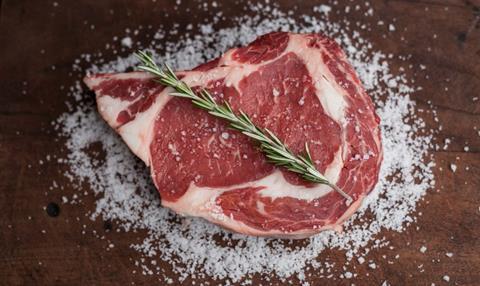Hybu Cig Cymru - Meat Promotion Wales (HCC) analysis of data underpinning supply and retail trends suggests the longer-term picture for beef prices could improve on the current experience of small, week-on-week declines.

According to data analysis by HCC, the longer-term picture for beef prices could improve on the current experience of small, week-on-week declines.
Deadweight prices for steers opened the year close to £4.90/kg and peaked at £4.95 at the start of March. Since then, they have declined to the current near £4.77/kg. Heifers and young bulls have also reportedly followed this course, with heifers currently around £4.74 (-7p YoY) and young bulls round £4.68 (-9p YoY).
HCC said the cull cow marked had "bucked the trend", with largely positive price movements to stand at around £3.59/kg - some 45p higher than the average recorded during the first week of January.
The trade body also found that the slight increased numbers of prime beef cattle and dairy males aged 12-30 months would "continue in the short term", with potential supply up 2% on the year at around 1.8 million head as of 1st April 2024 (according to the British Cattle Movement Service).
Glesni Phillips, HCC intelligence, analysis and business insight executive, said: "Several factors contribute to the present, almost weekly, marginally lower adjustment in prime cattle prices. Increased short term domestic supply; increased imports of Irish cattle and sluggish retail demand.
"It must be remembered that this is against a background of climbing farmgate prices over the past few years and especially since 2020, therefore the baseline average remains significantly higher than historical averages.”
Phillips said that the beneficial effects of these higher prices had been "somewhat negated by rising key farm input costs for beef producers, that have been fuelled by huge inflation rates, which had put pressure on the profitability of businesses".
Future may see "greater market stability"
However, HCC found that breeding herd trends over the past decade showed a notable decline, which it said was largely due to a combination of economic, policy, technological and environmental factors "putting pressure on both the beef and dairy sectors".
Phillips continued: "These include high production costs, market volatility, changes in Government subsidies, various TB restrictions and pressures surrounding environmental impacts have all put pressure on the industry. This has been partially mitigated by technological advancements and better herd management practices and beef production has been relatively stable despite these herd contractions.
"In the longer term - looking at the end of this year and into 2025 - these factors are expected to impact domestic supplies. GB data suggests the potential supply of prime beef cattle and dairy males ages 0-12 months is down 3% on the year at 1.9 million head of cattle."
She concluded: "This reduction in youngstock numbers was to be expected as calf birth registration numbers in GB last year fell more steeply than in previous years. We've seen this trend continue into quarter one of 2024, which suggests that supply further down the line will remain tight.
"These contributing factors all add up to the likelihood of greater market stability as they filter through towards the end of 2024."















